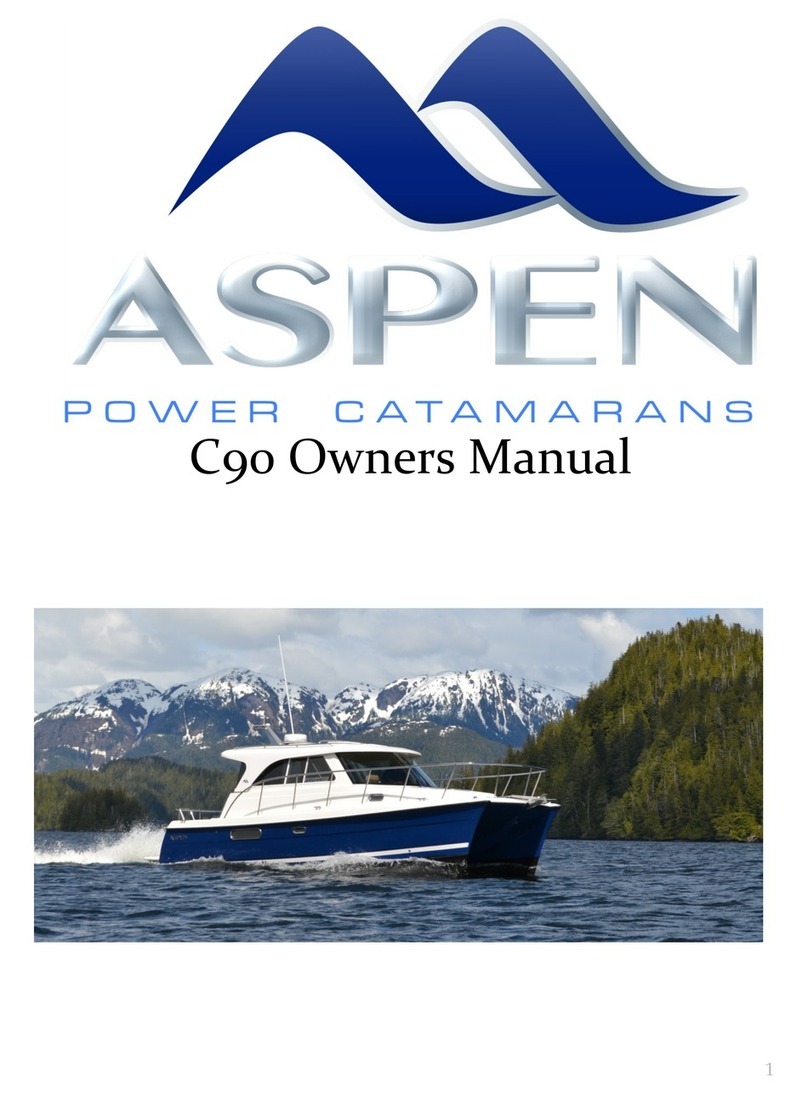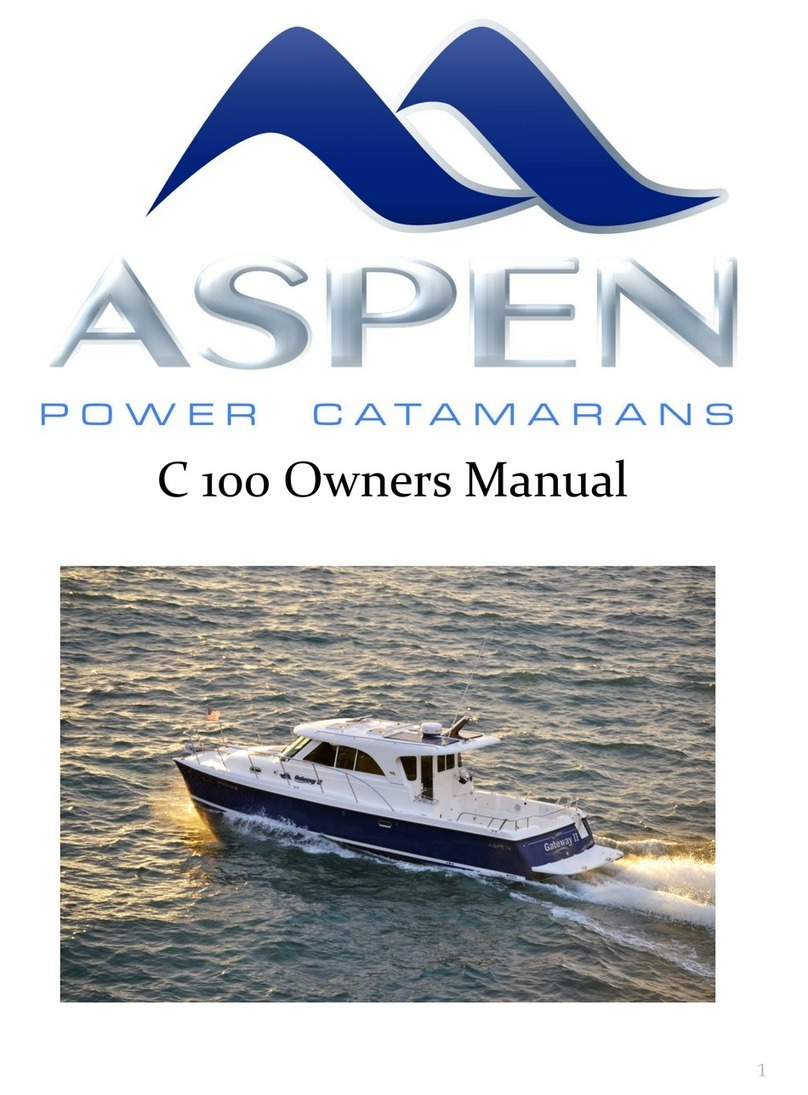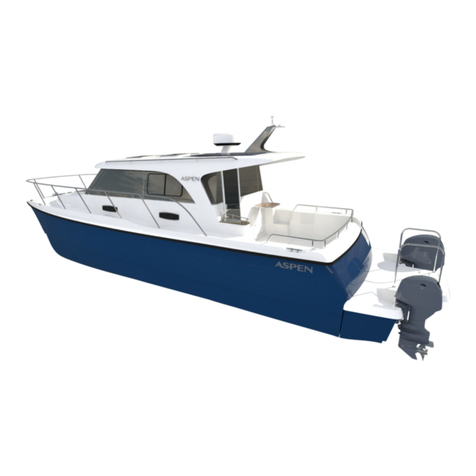SHORE POWER
Boat comes equipped with a 30-amp service cord. Note: It’s best not to exceed a 25-amp draw or
plug damage may occur. Be sure to twist lock to cord in place for complete connection at the
pedestal.
STOVE
The stove is propane and has a 15lb propane tank. Remember to turn the tank on at the bottle,
and then push the toggle switch next to the sniffer control to feed it power. Then turn on the
sniffer control unit to the right of the stove. Turn switch at stove off after use and close bottle if
leaving the boat for an extended period. Note: When starting the burner, you must hold the
control knob in for 10 seconds after it’s lit to heat the blowout safety sensor while pushing the
ignition button.
WATER
The boat has 2 water tanks, one in each hull. To activate the port tank, switch the water pump
switch at the dash to port side. To activate the starboard tank, move switch to starboard. If switch
is centered, both pumps are off. Capacity is 50 gallons. Remember to not run water continuously
to conserve your water supply.
QUICK START
The main battery switches are typically left on, the AC and DC breakers at the helm are switched
on or off as needed.
A. ENGINE CHECKS: engine oil level should be checked monthly or at the start of
each major trip. Before starting, prime both engines’ fuel systems by gently squeezing
the fuel primer bulb located port and starboard lazarette aft. Squeeze bulb until fuel priming
bulb becomes firm. This greatly reduces cranking time after the engine has set unused for
more than 2 days.
B. COVERS & CUSHIONS: aft deck cooler should be pulled out of the ¼ berth and
placed on the non-skid mat.
C. READY INSTRUMENTS: no action needed.
D. POWER PANELS: DC switches are normally off when leaving the boat for an
extended period of time. This kills power to 95% of the DC equipment. Note: if you
want the refrigerator left on, the lower sub-panel switch must be on. AC panel
breakers are also typically all on except the hot water 110V heater breaker –use
this only when needed as, with other loads, you can exceed 30 amps.
E. START ENGINE: assure throttles are in neutral position. Slip the safety lanyards
in. Turn the key until engine starts.
F. CASTING OFF: remove lines in appropriate manner and stow safely. Then remove
fenders/lines and stow safely. Never leave lines on cleats while underway.
G. UNDERWAY: attentive helmsman at all times.
H. ARRIVING AT MARINA: place fenders on proper side. Remember that neutral is
your friend. Use thrusters once, near dock. 5 second bursts–not more than 30 total.
I. ANCHORING: remove snubber line (safety line/bungee on anchor). Check to
see line in locker is clear and not bound by stored gear. Either at the helm or on the
deck, lower the anchor using switch pad. While retrieving, be sure to clean anchor
(bounce while in water) to clear mud and debris before it gets on the deck and in
the anchor locker.
General Note: If you activate the depth sounder/chartplotters while on land you must deactivate
the depth sounder module, or the transducer will overload and be damaged.
GETTING STARTED
CONTINUED
9

































